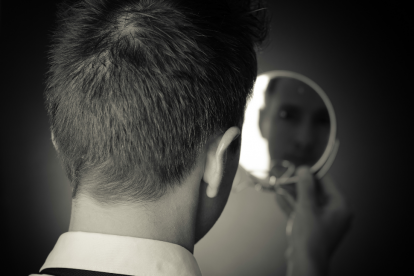
Bipolar Disorder Episodes (Manic, Psychosis, Depressive)
Bipolar disorder is a mood disorder that causes mood swings. Episodes of abnormal moods that may occur in a patient with bipolar disorder include depression, mania, and psychosis. Depressive episodes cause persistent feelings of sadness and loss of interest in activities. Manic episodes cause euphoria, increased energy and activity, and lack of sleep. Psychotic episodes may occur during depression or mania and can cause a person to become delusional or to hallucinate.
Bipolar Disorder Causes Mood Episodes
Bipolar disorder, which was previously called manic depression, is a mood disorder that causes episodes, lasting a couple of weeks or longer, of depression or mania, and sometimes psychosis. This is a mood disorder because it causes changes in mood that are not healthy and that can disrupt a person’s life significantly. It causes abnormal patterns of thinking, behavior, and thoughts and moods that do not align with someone’s reality.
For instance, a person with bipolar disorder may have a great life with a loving family and a nice job, but during a depressive episode cannot shake the feeling that he or she is worthless. These abnormal moods usually shift between depression and mania, the latter being the opposite of depression but just as destructive and unhealthy. In severe instances, some people will also go through episodes of psychosis in which they lose touch with reality and may hallucinate or have disturbing delusions. These mood episodes can be very damaging, but they are fortunately manageable with appropriate treatment.
Depressive Episodes
Bipolar depression episodes are very similar to episodes of major depression. The main factor that separates these two conditions is the presence of manic episodes. Just one episode of mania is enough to make the diagnosis bipolar disorder rather than major depression. But, when someone is going through bipolar depression, it looks and feels very much like major depression. Symptoms include:
- A persistent and intense feeling of sadness, hopelessness, or worthlessness
- Fatigue that goes beyond normal tiredness or that cannot be explained by lack of sleep or poor quality sleep, which can interfere with the ability to complete normal tasks
- Loss of interest in activities that are usually enjoyable
- Sluggishness and feeling slowed down, or the opposite, feeling restless and agitated
- Either sleeping more or less than usual
- Eating more or less than usual, with resulting weight loss or weight gain
- Feelings of guilt and shame that don’t make sense considering a person’s circumstances
- Difficulty focusing on a task or activity, trouble with memory or concentration, and an inability to make even simple decisions
- Persistent thoughts about death, which may or may not include thoughts of suicide, followed by suicidal behavior
Bipolar depressive episodes may cause all of these symptoms or just a handful. Each person experiences and expresses depression in a slightly different way, but there are many commonalities. To be considered a depressive episode, a person must have at least five of the common symptoms and these must persist and be significantly disruptive for two weeks or more. One of the five symptoms must be depressed mood or loss of interest in activities.
Manic Episodes
Mania, or the less severe hypomania, must have occurred at least once for a person to be diagnosed with bipolar disorder. A manic bipolar episode is a period of time in which a person’s mood is abnormally elevated, irritable, or both. The mood may shift between irritability and euphoria several times. Symptoms of mania include:
- Grandiosity, an inflated or exaggerated sense of self-esteem, or complete and uncritical self-confidence, which can be so extreme as to be delusional
- Less sleep and increased energy and activity levels
- Racing thoughts and ideas that jump around from one topic to another.
- Fast or intense patterns of speech, including talking too loudly, too fast or too much regardless of whether anyone is listening or showing interest
- Easy distractibility
- A big increase in trying to achieve goals, like making a lot of plans or being determined to complete an unreasonable amount of tasks, which may also take the form of agitation, restlessness, and pacing
- Risk-taking behaviors, like driving recklessly, being sexually promiscuous, or overspending
To be diagnosed as having had a manic episode, a person must have experienced at least three of the symptoms. If the person’s mood is only irritable, not euphoric, they must show at least four of the symptoms. The symptoms have to persist for at least a week and cause significant distress or impairment.
Hypomanic Episodes
There is more than one type of bipolar disorder, and the type referred to as bipolar II causes episodes of hypomania rather than mania. Hypomania causes any of the same symptoms as mania, but is less intense and less severe. It may also last for a shorter period of time than mania. To be classified as a hypomanic episode, the less intense symptoms must last for at least four days. The episode, although less severe than mania, must cause a noticeably different mood than a person’s normal mood.
Bipolar Psychosis
Psychosis that occurs in someone with bipolar disorder is not a separate episode. Psychotic symptoms may occur as part of either a manic episode or a depressive episode. Not everyone with bipolar disorder will experience psychosis, and some may have psychotic symptoms during some episodes but not others.
Psychosis occurs when a person’s thoughts and perceptions are disturbed and cause them to be unable to distinguish between reality and non-realty. Psychosis typically takes one of two different forms: hallucinations, which may be auditory, visual or both, and delusions. Psychosis is more common during manic episodes but may occur during depressive episodes as well. If the person experiencing psychosis has been abusing substances, that may be the underlying cause of the symptoms. Detox is required before an accurate diagnosis can be made.
There are often early signs of bipolar psychosis that precede actual delusions and hallucinations, including:
- Decreased performance at school or work
- Trouble concentrating
- Social withdrawal
- Difficulty with communicating clearly
- Lack of attention to hygiene
- Decreased emotional expression
- Inappropriate suspicion or paranoia
It can be easy to confuse schizoaffective disorder with bipolar disorder that triggers psychotic symptoms. Schizoaffective disorder can cause symptoms of bipolar, schizophrenia, and psychosis. What makes the two conditions different is that someone with schizoaffective disorder will experience the symptoms of schizophrenia, including psychosis, for periods of time during which there are no manic or depressive symptoms. Bipolar disorder, on the other hand, can cause similar psychosis symptoms, but these occur only during a manic or depressive episode.
Call for a Free Confidential Assessment.
877-727-4343Mixed Episodes
Also possible with bipolar disorder is a mixed episode. When mental health professionals make a diagnosis of bipolar disorder, they may add a specifier, a term that simply better describes an individual’s experience of the condition. For instance, someone may experience manic episodes with mixed features or depressive episodes with mixed features.
A manic episode with mixed features means that a person is experiencing mania and at the same time has at least three symptoms of a depressive episode, such as sadness, thoughts of death, or sluggishness. A depressive episode with mixed features occurs when someone meets the clinical criteria for major depression but also has a few signs of mania. This may lead to a diagnosis of depression instead of bipolar disorder, but it can indicate that the patient will later develop bipolar disorder and experience full manic episodes.
Bipolar Episodes in Children and Teens
Bipolar disorder may first appear in childhood, although this is not common, or more often during the teenage years. The signs and symptoms of manic and depressive episodes may be similar to those seen in adults, but there can also be significant differences. The symptoms in younger patients can also be similar to substance abuse or attention deficit hyperactivity disorder and other behavioral disorders, making diagnosis challenging. These are some of the differences in symptoms between adults and children or teens:
- The feelings of depression and sadness during a depressive episode are often expressed as irritability in children and teens.
- Smaller children may fail to meet weight gain expectations because of depressive episodes.
- Children are more likely to complain of physical pains during depressive episodes.
- During a manic episode, a child or teen may act in a way that is inappropriate for their age, acting silly or like a younger child.
- Manic episodes can cause temper tantrums.
- Risky behaviors are especially likely in teens during manic episodes.
- During either type of episode, behavior problems are common in children and teens.
Bipolar disorder is a very serious mental illness that causes significant impairment in a person’s life, regardless of age. This condition is treatable, but sometimes the episodes can be severe enough to require hospitalization. This is especially true when psychotic symptoms are present. Many people with bipolar disorder benefit from intensive residential treatment that includes various types of therapy and medication. After residential treatment for bipolar disorder, patients need to keep up with therapy and other elements of the treatment plan to manage this chronic illness.





